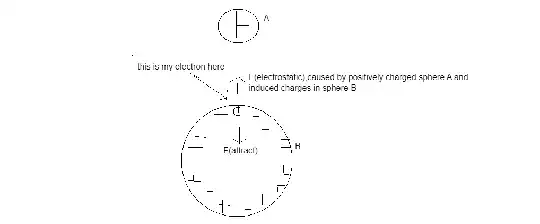When a conductor is in electrostatic equilibrium, as far as I know, the electric field on the surface must be perpendicular to the conductor. This leads to a rather difficult problem for me, if the electrostatic force (as far as I know, this force includes the attraction of the ions + the repel of electrons) is acting on the electron's outward direction as shown, then there must be a force F (attraction) pulling it inward to satisfy the equilibrium condition and prevent electrons from leaving the conductive material. So what is this force really?
I am looking for a qualitative explanation (not a mathematical one) and on top of that. I hope someone can clarify this for me. Thank you!
